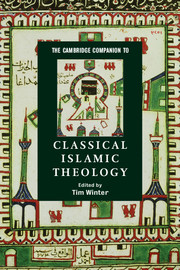9 - Revelation
from Part II: - Themes
Published online by Cambridge University Press: 28 June 2008
Summary
The concept of “revelation” is usually considered to have for correspondents, in the Arabic language, words formed on the basis of two different roots: WHY and NZL. In English translations of the Qur'an, wahy is commonly understood as “revelation” and awhā as “to reveal” or, sometimes, as “to inspire” or “to incite”. In non-religious contexts, however, a fundamental meaning expressed by the root seems to be that of a sound or noise, rapid and blustering like thunder. Words derived from the second root, like nazala, nuzūl, nazzala and anzala, all relate to the ideas of “coming down”, “descending”, or “sending down”, and have a strong place-related physical connotation. In the Qur'an, they are used much more often than the words derived from WHY. Once examined together, the various qur'anic occurrences of these two groups of terms convey the clear image, not of the “unveiling” evoked by the word “revelation”, but rather of a solemn or even awe-inspiring communication, literally originating “from on High”: “If We had sent down this Qur'an upon a mountain, you would have seen it humble itself and split apart by the fear of God” (59:21).
The affirmation that such a transcendent communication takes place in the history of mankind is most often conceived in Islam through the dimensions of prophethood and messengership, from which it is therefore sometimes difficult to distinguish the thematic of revelation. The latter should, however, not be studied exclusively in relation to its recipient but also from the viewpoint of its divine origin and of the modalities of its transmission. This means, first and foremost, that a proper understanding of God as “revelator” must be developed.
- Type
- Chapter
- Information
- The Cambridge Companion to Classical Islamic Theology , pp. 180 - 196Publisher: Cambridge University PressPrint publication year: 2008
- 3
- Cited by

